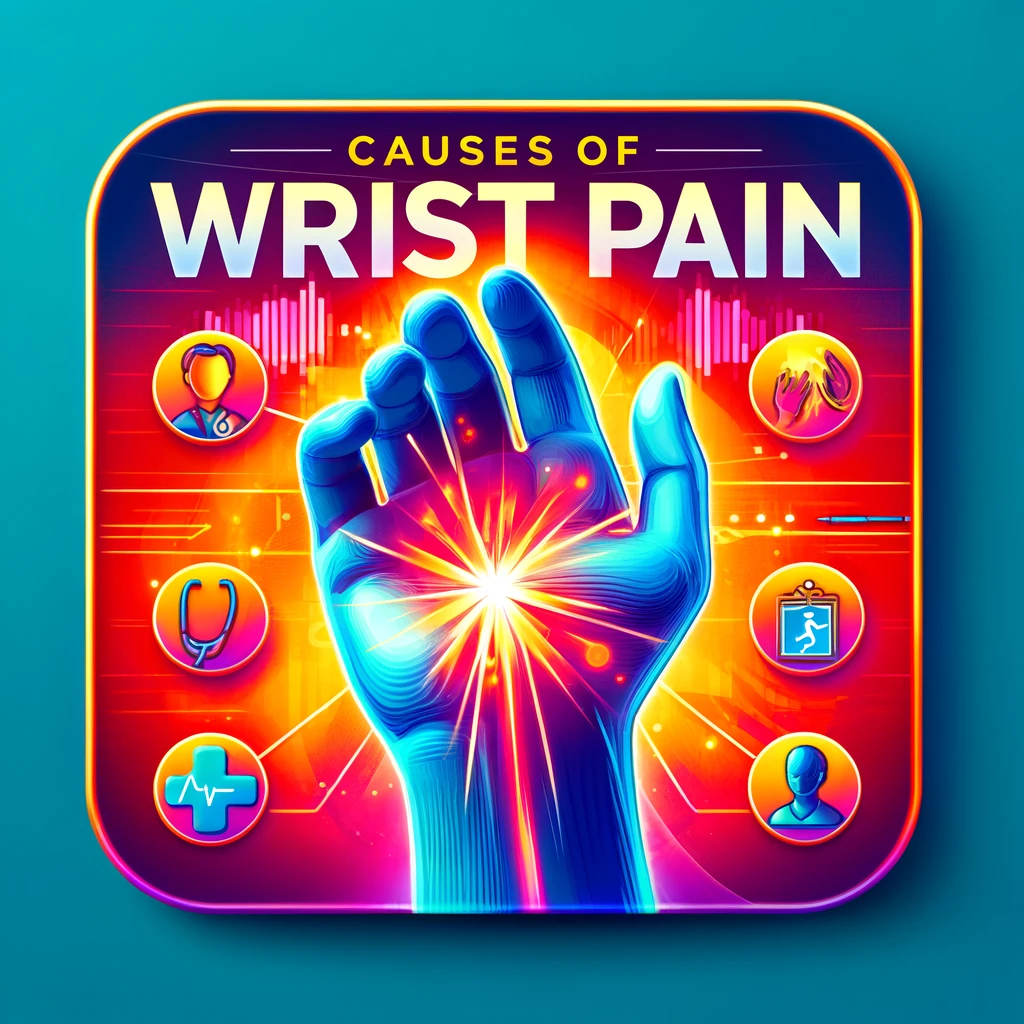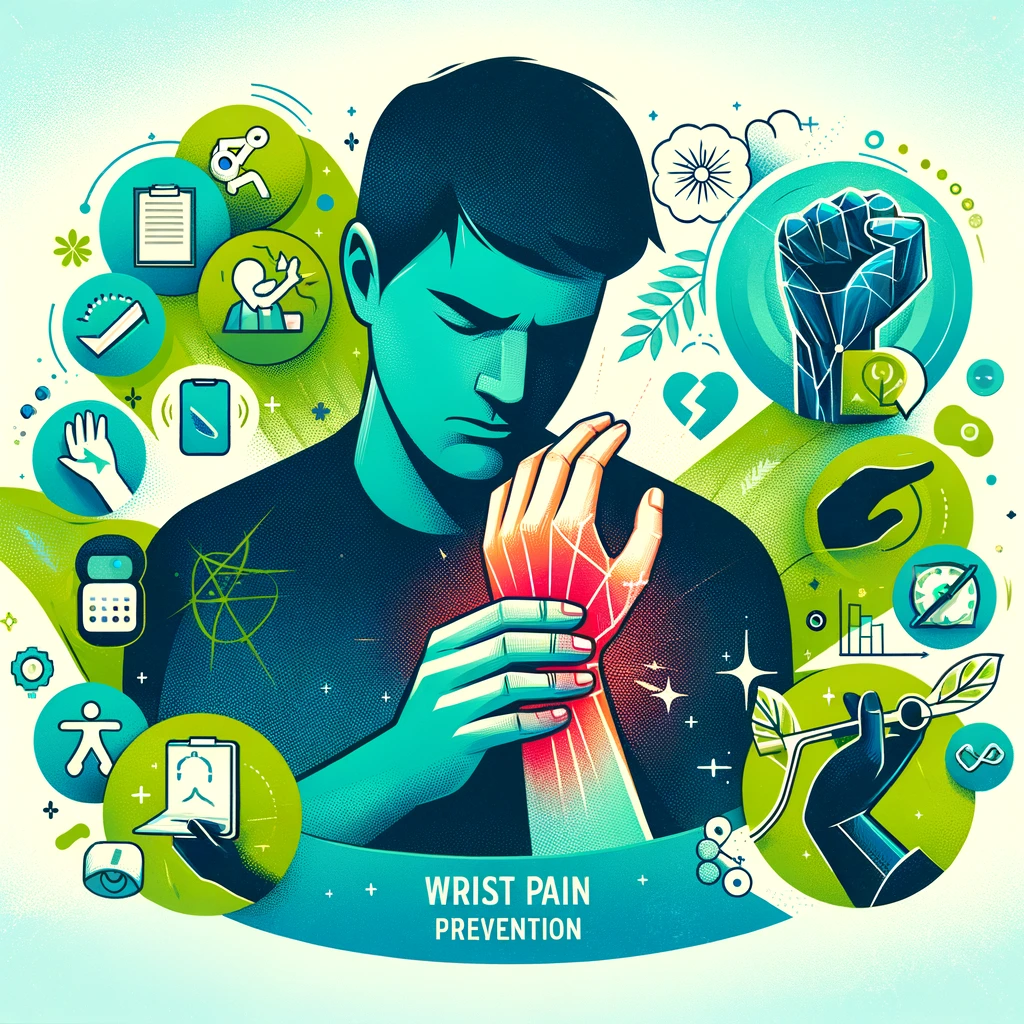
Table of Contents
Causes of Wrist Pain
Wrist pain can be a real nuisance, affecting your daily activities and overall quality of life. Understanding causes of wrist pain is crucial for finding the right treatment and prevention strategies. In this article, we’ll dive deep into the various reasons why your wrist might be hurting, from common issues to medical conditions and lifestyle factors.
Common Causes of Wrist Pain
Repetitive Strain Injuries (RSIs)
RSIs are a frequent culprit behind wrist pain. They occur when repetitive motions lead to inflammation and damage to the muscles and tendons. Think of actions like typing, playing certain musical instruments, or assembly line work. These repetitive tasks can strain the wrist over time, leading to discomfort and pain.
Carpal Tunnel Syndrome
Carpal Tunnel Syndrome is another common issue. It happens when the median nerve, which runs through the wrist, gets compressed. Symptoms include numbness, tingling and weakness in the hand. Often, this condition is linked to repetitive hand motions or conditions like diabetes and hypothyroidism.
Arthritis
Arthritis, particularly osteoarthritis and rheumatoid arthritis, can wreak havoc on your wrists. Osteoarthritis involves wear and tear of the cartilage, while rheumatoid arthritis is an autoimmune condition that targets the joints. Both types can cause significant pain, swelling and stiffness in the wrists.
Fractures and Sprains
Injuries like fractures and sprains are common causes of wrist pain. Whether you’ve had a bad fall or a sports-related injury, the result can be a broken bone or a sprained ligament. Symptoms include severe pain, swelling and bruising. Immediate care, such as immobilization and ice, is crucial.
Medical Conditions Leading to Wrist Pain
Tendinitis
Tendinitis refers to inflammation of the tendons in the wrist. It’s often caused by repetitive use or sudden injuries. Treatment typically involves rest, ice, and anti-inflammatory medications. Severe cases might require physical therapy or even surgery.
Ganglion Cysts
These noncancerous lumps develop along the tendons or joints of your wrists. While they’re usually harmless, ganglion cysts can cause pain or interfere with joint movement. Treatments range from observation to aspiration or surgical removal.
De Quervain’s Tenosynovitis
This condition affects the tendons on the thumb side of your wrist. It’s often linked to repetitive thumb motions, such as texting or playing video games. Symptoms include pain and swelling near the base of your thumb. Splints, anti-inflammatory medications, and avoiding aggravating activities are common treatments.
Lifestyle Factors Contributing to Wrist Pain
Poor Ergonomics
The way you set up your workstation can significantly impact your wrist health. Poor ergonomics, such as improper keyboard or mouse placement, can strain your wrists. Adjusting your workstation to promote a neutral wrist position can prevent pain and injuries.
Sports and Physical Activities
Engaging in sports or physical activities without proper technique can lead to wrist injuries. Sports like tennis, golf and gymnastics put a lot of strain on the wrists. Using proper equipment and techniques, along with regular strengthening exercises, can help prevent these injuries.
Obesity
Excess weight can contribute to joint pain, including in your wrists. Obesity increases the load on your joints and can lead to conditions like osteoarthritis. Maintaining a healthy weight through diet and exercise is essential for joint health.
Diagnosing Wrist Pain
Physical Examination
A thorough physical examination by a healthcare provider is the first step in diagnosing wrist pain. They’ll check for swelling, tenderness and range of motion. They might also ask about your symptoms and medical history.
Imaging Tests
Imaging tests like X-rays, MRIs, and ultrasounds can provide detailed pictures of your wrist’s internal structures. These tests help identify fractures, arthritis, and other conditions causing your pain.
Nerve Tests
Nerve tests such as Electromyography (EMG) and Nerve Conduction Studies can diagnose nerve compression conditions like Carpal Tunnel Syndrome. These tests measure the electrical activity of your muscles and nerves.
Treatment Options for Wrist Pain
Home Remedies
For mild wrist pain, home remedies can be quite effective. The RICE method—Rest, Ice, Compression and Elevation—can reduce pain and swelling. Over-the-counter pain relievers like ibuprofen can also help.
Medications
In more severe cases, prescription medications might be necessary. These can include stronger pain relievers, anti-inflammatory drugs, or corticosteroid injections to reduce inflammation.
Physical Therapy
Physical therapy is a key component of treatment for many wrist conditions. Therapists can teach you exercises to strengthen your wrist muscles and improve flexibility, reducing pain and preventing future injuries.
Surgical Interventions
When conservative treatments fail, surgery might be necessary. Procedures can range from repairing torn ligaments to relieving nerve compression. Your doctor will determine the best surgical approach based on your condition.
Preventing Wrist Pain
Ergonomic Adjustments
Making ergonomic adjustments at work and home can significantly reduce your risk of wrist pain. Ensure your workstation is set up to keep your wrists in a neutral position. Use ergonomic keyboards and mouse devices.
Regular Exercise
Regular exercise that includes wrist-strengthening and flexibility exercises can keep your wrists healthy. Activities like yoga and stretching routines can improve joint health and prevent injuries.
Proper Techniques in Sports
Using proper techniques in sports and physical activities can prevent wrist injuries. Make sure to warm up before activities and use appropriate gear to protect your wrists.
Conclusion
Understanding the causes of wrist pain is the first step toward effective treatment and prevention. Whether it’s due to repetitive strain, underlying medical conditions or lifestyle factors, addressing the root cause is crucial. If you’re experiencing persistent wrist pain, don’t hesitate to seek medical advice for a proper diagnosis and treatment plan.
FAQs
What are the first signs of wrist pain?
The first signs often include discomfort, swelling and a reduced range of motion. You might also notice tingling or numbness if nerve compression is involved.
Can wrist pain be a sign of a more serious condition?
Yes, wrist pain can indicate serious conditions like arthritis, Carpal Tunnel Syndrome or even fractures. It’s important to get a proper diagnosis if the pain persists.
How can I tell if my wrist pain is from a fracture or a sprain?
Fractures typically cause intense pain, swelling and bruising. Sprains also cause pain and swelling but might allow for more movement. Imaging tests are usually required for a definitive diagnosis.
What lifestyle changes can help prevent wrist pain?
Ergonomic adjustments, regular exercise, and maintaining a healthy weight can all help prevent wrist pain. Proper techniques in sports and physical activities are also crucial.
When should I see a doctor for wrist pain?
If you experience severe pain, swelling, numbness or if the pain persists despite home treatments, it’s time to see a doctor. Early diagnosis and treatment can prevent further complications.




One thought on “Causes of Wrist Pain”